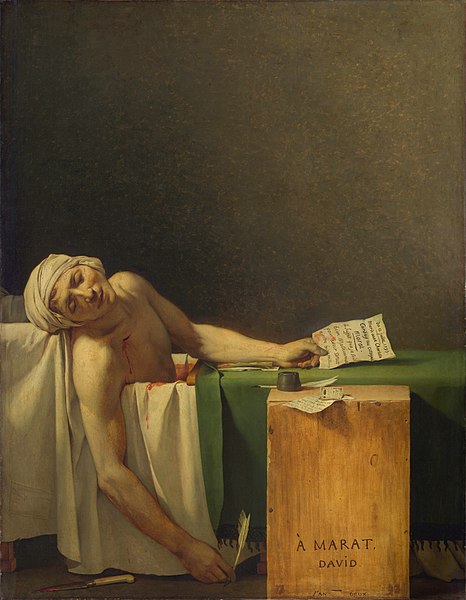The Intervention of the Sabine Women
7:00 AM
 |
| Jacques-Louis David, The Intervention of the Sabine Women, 1799 |
BY KAELYN ROSS
Jacques-Louis David, the most preeminent painter of the Neoclassical Era, painted The Intervention of the Sabine Woman (also know as The Rape of the Sabine Women) after being released from jail in 1799 after the fall of his beloved friend, Robespierre. His wife, visiting him in prison, inspired him to make this, and he decided to align himself with yet another ruler -- Napoleon.
Jacques-Louis David, the most preeminent painter of the Neoclassical Era, painted The Intervention of the Sabine Woman (also know as The Rape of the Sabine Women) after being released from jail in 1799 after the fall of his beloved friend, Robespierre. His wife, visiting him in prison, inspired him to make this, and he decided to align himself with yet another ruler -- Napoleon.
The work symbollically depicts the bloody conflicts between France and other Europeans after the Reign of Terror; he seemingly presents a critique of violence and instead suggests to bond over a common hatred. The painting, set at Tarpeian Rock where convicts were thrown off, shows women and their children rushing to escape after being kidnapped by a group of soldiers due to their sexuality and the discourse between Sabines and Romans.
Despite the apparent violence in this work, its value derives from David's ability to express underlying messages in his political works. David planned out his harsh and angular lines, sespecially with sthe pears. However, the circular shield stands out in a crowd of lines, shining gold. It represents safety, protection, and selflessness: all of what's desired by the women. The sky speaks to me because although blue and sunny towards the middle while storm clouds pass like a new hopefully more peaceful era arrives. At first glance I thought of this painting as a sacrifice that the women were making for their children. After researching context and over time, I saw themes of violence, peace, motherhood, rape, sexism, and yet hope. The centered woman in pure white reaches out to request peace, much as as David did painting this work.










0 comments